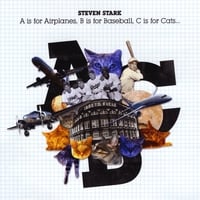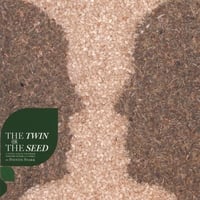I am very, very excited about the Edmond North High School Orchestra concert May 14, 2015 at 7:00PM!
The Symphony Orchestra will be performing my piece Wovensong No. 1 “An Arduous Path”. Edmond North has four orchestras, and I am telling you, this group sounds like a university orchestra - easily!
Another one of their excellent ensembles will join me in a performance of my song “Lazarus” which is featured on my 2008 album “A is for Airplanes, B is for Baseball, C is for Cats...” I wrote an arrangement for the string players, and I can’t wait to play with them.
Another one of their excellent ensembles will join me in a performance of my song “Lazarus” which is featured on my 2008 album “A is for Airplanes, B is for Baseball, C is for Cats...” I wrote an arrangement for the string players, and I can’t wait to play with them.
I am pasting the program notes below. I hope to see some of you there! For those who cannot attend, I hope we will have some audio/video to post as well.
The concert is at the Edmond North High School auditorium and begins at 7:00PM. I should also mention that the performance is under the direction of orchestra wizard Peter Markes, Oklahoma's 2013-2014 Teacher of the Year, with bass extraordinaire Jeff Ketch.
Wovensong No. 1 “An Arduous Path” Program Notes
Weaving is a way of producing fabric by interlacing two distinct materials. The longitudinal threads are called the warp, and the lateral threads are called the weft. A Wovensong is a form featuring two distinct melodic ideas which are woven together in different ways as the piece progresses. The form is not unlike a Sonata-Allegro form (the traditional first movement of a symphony), but the structure of the Wovensong is more centered on melodic material than key relationship. In fact, it is desirable in a Wovensong to end the piece in a different key from the beginning to signify variation and linear progression. Recognition is brought about by the repetition and development of familiar melodies. The use of the word “song” in the form title also signifies a focus on melodic material.
“Wovensong: An Arduous Path” begins with a soft Introduction followed by a pointed, minor-key theme (the Warp) presented in unison by all the strings. After a period of development, a major-key, lilting theme (the Weft) takes over. The Weave section features material from the Introduction, the Weft, and the Warp; beginning in a reflective mood and then spinning out aggressively towards the end.
Lazarus Program Notes
The lyrics to “Lazarus” describe three miracles from three different religious traditions (I have often thought that I should have named this song “Three Miracles”!). The first is the Buddhist miracle of the discovery of the 14th Dalai Lama, who is said, among other things, to have pointed towards the city of Lhasa, the traditional home of the Dalai Lama, as a very young child and announced that he would be going there soon.
The second miracle is from the Daoist tradition. A carver wants to make a bell stand out of wood. Rather than carving one himself, he walks through the forest and eventually finds one that nature has already created.
The third miracle is the story of Lazarus, from the Christian tradition, who is said to have been raised from the dead by Jesus.
I realize that it took longer to read these notes than it would to read the lyrics of the song!
The music goes back and forth between the keys of G Major and E Major to create variation, while the melody only changes subtly. The arrangement for the Chamber Orchestra was great fun to write - I could not be more excited to perform with them!



No comments:
Post a Comment